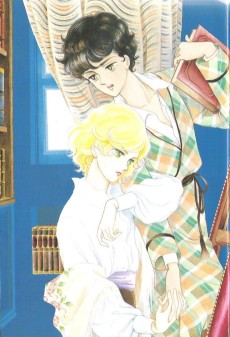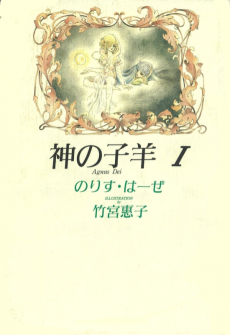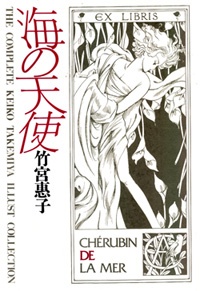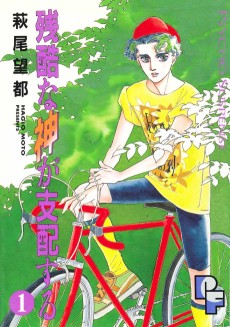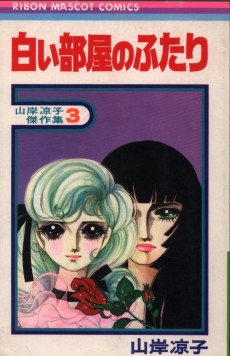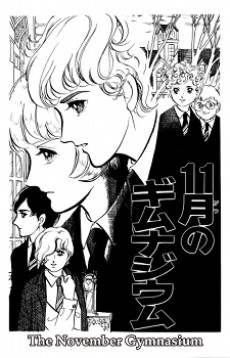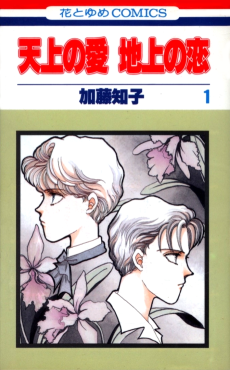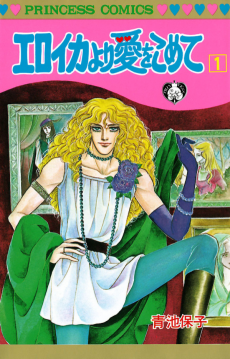KAZE TO KI NO UTA
STATUS
COMPLETE
VOLUMES
17
RELEASE
June 1, 1984
CHAPTERS
139
DESCRIPTION
Serge Battour is the son of a French viscount and a Romani prostitute, and despite his kind nature and academic talent, is shunned by his family and his peers due to the color of his skin. He begins to attend Lacombrade Academy, his father's alma mater, in the hopes that there he will find a place to belong.
Gilbert Cocteau is, like Serge, the orphaned son of a wealthy family, and is infamous at Lacombrade for his beautiful and delicate appearance, lack of dedication to schoolwork, and habit of prostituting himself to other students. He has no intention to connect with any of his classmates, instead devoting himself to his uncle Auguste.
Due to a shortage of living space, Serge and Gilbert become roommates even though Gilbert's antisocial nature has in the past made it impossible for him to room with anybody. Serge, being sociable and idealistic, is determined to be friends with Gilbert; Gilbert is only interested in either being able to manipulate Serge or push him away entirely. To the surprise of both of the boys, however, the two eventually form a deep, albeit generally dismal, bond that leads to a romantic connection.
CAST
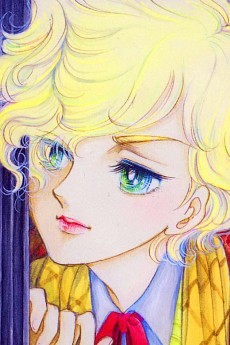
Gilbert Cocteau

Serge Battour
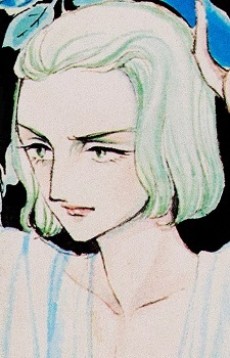
Auguste Beau
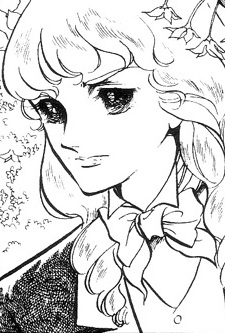
Arion Rosemariné
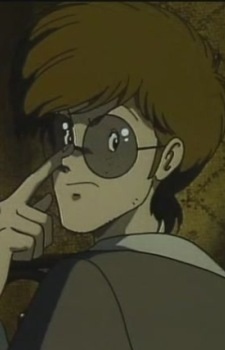
Pascal Biquet
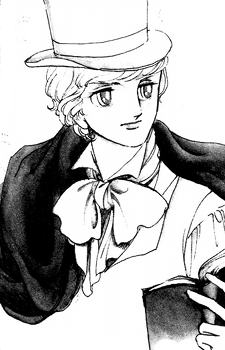
Aslan Battour
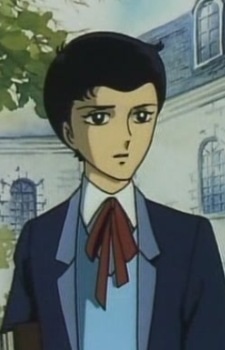
Karl Meiser
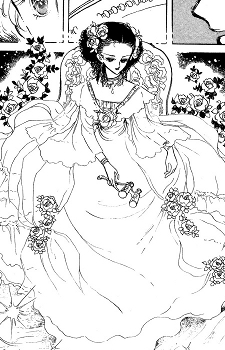
Pavia Battour
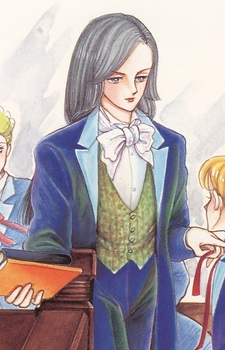
Jules de Ferrier
CHAPTERS
RELATED TO KAZE TO KI NO UTA
REVIEWS

llorando
80/100I’d recommend this to anyone that is seeking aesthetic excellence and isn’t bothered by shoujo melodramaContinue on AniListWhat initially brought me to read KazeKi, besides my general interest in the Year 24 group, was Chiho Saito's, member of the Be-Papas, remark about Revolutionary Girl Utena being "based" on this series. They're indeed alike on the surface: a beautiful and mysterious student that is treated like a heartless doll meets a white knight that sets out to save them but soon finds out that things aren't always what they seem. The main setting is also an isolated boarding school with similar architecture, like Oniisama e... and Heart of Thomas, there's a green house shaped like a cage where Gilbert and Anthy do their thing, and this mysterious student's closer relative is the one running the school. But that's about as similar as they get, just the skeleton (this isn't a RGU review anyway, so...)
Gilbert is a gorgeous self destructive angel whom'll put a demoniac facade to get what he wants. His existence is ethereal-like and he'll often be, in a poetic tone, painted as a white dove; the inspiration for his character seems to be Björn Andrésen, the boy from Death in Venice, and the idea behind both characters is the same: rather than human beings they're a stand in for beauty itself. He sleeps around because he can't stand being alone, and is very casually raped from time to time – which he expects to be the only way people will always treat him anyway. The way he understands the world is generally different from normal people. Then we have Serge, a goody-two-shoes with a strong determination, a harsh past and a golden heart. They both meet and somehow form a unstable connection on the first volumes, but then we're thrown on what must have been the biggest flashback I've ever seen (or maybe it's Berserk's, but it's been long since I've read that one)
There're two flashbacks that serves to explain both of our MC's past and how they're supposedly similar to each other. Gilbert's past is covered with an unconfortably high number scenes of abuse and pedophilia: he's constantly assalted by... basically every male character that set their eyes on him, and has a very, uhm, "distinct" relationship with his guardian, August. Gilbert, being "beauty", is capable of awakening desire on seemingly anyone he chooses (or not) – with the exception of Serge, the only one who manages to partially control his urges around him. Serge's flashback starts with his father, before he himself was born, and is a very linear, predictable high born boy meets low born girl story, and then evolves to the evil step mother tale, which I don't find worth dwelling on and seems to me to be the worst section of the whole story.
Problem arises as our two main characters walk towards their fateful bounding, and pretty much all of it involve some form of physical or sexual abuse, to the point of exhaustion. Not only Gilbert but also other characters – there's a lot of rape being thrown around and being hinted as the reason why some characters act the way they do, which sometimes is of pretty bad taste. It's not that there's something inherently wrong with portraying abuse, but there's only so much one can take before it becomes redundant, merely a shock factor. Speaking of abuse and repetition, there's a particularly exhausting plot device on the last third of the manga that involves Gilbert silently suffering on the worst way imaginable while Serge is obliviously being his happy go lucky self, only to later find out everything and greatly suffer from remorse. We're supposed to suffer like Serge, I think, but after so much has been done it's pretty hard to play along with it. There’s also one particular character who rapes Gilbert early in the series and is then portrayed in a very benign light later on. Not that I’d ever want a one dimensional evil monster, but even if I let the moral dilemma aside and try not to be anachronic with my approach, i'm still left wondering what exactly Takemiya was trying to get on with this particular plot line.
SPOILERS:
Towards the end of the manga there's a instance of self sacrifice that our boy Serge indulges on thanks to his father's life story, but much like the naive boy who jumps on a river to save a drowning girl and ironically dies, from Utena, Serge quickly discover that life isn't a fairy tale, even on this shoujo manga, that despite his good intentions he can't save someone who doesn't believe they need to be saved in the first place, and that sometimes love just isn't enough – and so he fails his quest. But unlike Utena’s brilliant ending, KazeKi plays like a more predictable tragedy and ends where you think it will: Gilbert as a character never displays agency beyond one impactful event earlier in the series (where he chooses to be with Serge instead of August), he continues being hopelessly thrown around by everyone and tragically dies after pedophile number #57 in the last minute turns him into a drug addict (which felt silly, to say the least). Gilbert, who could only live for love, then becomes a symbol for Serge’s missing other half, whom’ll live a straight life, probably in both senses of the word, carrying his adolescent love in his heart.
August, the series third center character and “main antagonist”, if you will, is weirdly never confronted in this ending. He just dissapears after the 15th volume and it’s up to you to imagine how he reacted to his child’s death.
END OF SPOILERS
When it’s all said and done, and despite all the criticism, KazeKi isn’t a bad manga, it’s in fact a very good one, and is rightfully considered as such a classic. Simply put, the whole thing is gorgeous: the art itself and the paneling combined to create some stunning imagery. It's seriously outstanding. I found myself hitting the print screen button almost every chapter. Like most older shoujo manga, character’s emotions are usually presented in a very melodramatic way, they are prone to overeact and there’s a lot of blanky eyes, flowery imagery and all sort of embelishments running around the page. It’s dense and a bit overloaded, but also extremely beautiful (and Takemiya is particularly above the rest when it comes to her craft). The moments where Serge and Gilbert get together are breathtaking and staring at these pictures never failed to deliever a wild range of sensations. KazeKi is erotic not only because the story is filled with a huge amount of sex, but because the art exudes such quality almost to an intoxicating degree. It's impossible to ignore Takemiya's talent even when taking notion of the aforementioned contrivied elements that fills the narrative; she knows how to do manga and this one is way above of most of what would come after it under the same genre.
I’d recommend this to anyone that is seeking aesthetic excellence and isn’t bothered by most shoujo troupes. If you’re here looking for ancient BL history, I’d say that this one is a more fulfulling male x male story than it’s cousing, The Heart of Thomas, which is tamer about homossexuality, instead being more focused on telling a (exceptionally beautiful) tale about grief.
Just, for the love of god, do not read this if you’re triggered by rape.

toitoist
100/100The Body as an Object of Desire and Pain in Kaze to Ki no UtaContinue on AniListKaze to Ki no Uta is a work that stands out for its symbolic density and profoundly dualistic structure. The narrative follows the turbulent relationship between Serge Battour and Gilbert Cocteau, two opposing characters who share the same tragedy. More than a story about a youthful romance between two boys, the work serves as an intense meditation on love, the body, sexuality, desire, sin, and the redemption of the soul. Through this sensitive and provocative construction, the narrative delicately proposes a reflection on the limits of love and morality. The body is a key element in Kaze to Ki no Uta, shaping the way the characters relate to each other. Since entering high society, Serge has been viewed as impure due to the color of his skin and the circumstances of his birth. Even his talent and efforts are not enough to erase society’s perception of his body.  Gilbert, on the other hand, possesses an appearance often likened to that of an angel — admired for his beauty and simultaneously desired by many, which makes him the target of repeated abuse.
Due to his neglectful and traumatic upbringing, Gilbert develops a deep need for physical contact, especially of a sexual nature, as a way to fill the emptiness inside him. Throughout the story, it is through his body that Gilbert expresses his feelings for Serge — whether by hitting him or kissing him.
Bloodline and inherited stories also emerge as a strong element in the plot. Serge is deeply influenced by his father Aslan’s past — a man who abandoned those he loved to pursue a romance with a young courtesan. Aslan ends up "saving" her from an impure path she had been forced into. Serge attempts to replicate his parents' love story in his relationship with Gilbert, striving to turn his companion into a “normal” boy, trying to save him from Auguste.
Conversely, Gilbert reenacts the tragedy of his own lineage due to the negligence of his upbringing. Abandoned by his mother and raised by his “uncle,” Gilbert is, from an early age, the victim of abuse inflicted by Auguste. Auguste exercises power over him: having been sexually abused by his adoptive brother, Auguste sees in Gilbert a chance to reproduce the same evil he once suffered. Gilbert ends up as a puppet in his uncle’s hands, emotionally dependent on the figure of Auguste.
Gilbert, on the other hand, possesses an appearance often likened to that of an angel — admired for his beauty and simultaneously desired by many, which makes him the target of repeated abuse.
Due to his neglectful and traumatic upbringing, Gilbert develops a deep need for physical contact, especially of a sexual nature, as a way to fill the emptiness inside him. Throughout the story, it is through his body that Gilbert expresses his feelings for Serge — whether by hitting him or kissing him.
Bloodline and inherited stories also emerge as a strong element in the plot. Serge is deeply influenced by his father Aslan’s past — a man who abandoned those he loved to pursue a romance with a young courtesan. Aslan ends up "saving" her from an impure path she had been forced into. Serge attempts to replicate his parents' love story in his relationship with Gilbert, striving to turn his companion into a “normal” boy, trying to save him from Auguste.
Conversely, Gilbert reenacts the tragedy of his own lineage due to the negligence of his upbringing. Abandoned by his mother and raised by his “uncle,” Gilbert is, from an early age, the victim of abuse inflicted by Auguste. Auguste exercises power over him: having been sexually abused by his adoptive brother, Auguste sees in Gilbert a chance to reproduce the same evil he once suffered. Gilbert ends up as a puppet in his uncle’s hands, emotionally dependent on the figure of Auguste.
 The Poem of Wind and Trees is dualistic at its core. Dualism serves as the structural foundation of the relationships. Throughout the narrative, characters face dilemmas between love and sin, purity and corruption, bodily desire and spiritual longing. The setting — a Christian boarding school inhabited by seemingly pure boys who secretly harbor intense carnal desires — intensifies Serge’s internal conflict: whether to surrender to his passion for Gilbert or remain on the path of righteousness, away from the torments surrounding his roommate.
Kazeki’s illustrations heighten the sense of dualism by merging the sacred with the profane. On several occasions, Gilbert is depicted with wings, reinforcing his angelic beauty and pure appearance. However, this same image is challenged by the constant presence of Christian religiosity, which reveals the weight of sin in the protagonists’ relationship. Symbols such as the cross, the Virgin Mary, and other sacred representations appear amid scenes of despair, pain, and suffering, highlighting the contrast between spirituality and carnal desire.
The Poem of Wind and Trees is dualistic at its core. Dualism serves as the structural foundation of the relationships. Throughout the narrative, characters face dilemmas between love and sin, purity and corruption, bodily desire and spiritual longing. The setting — a Christian boarding school inhabited by seemingly pure boys who secretly harbor intense carnal desires — intensifies Serge’s internal conflict: whether to surrender to his passion for Gilbert or remain on the path of righteousness, away from the torments surrounding his roommate.
Kazeki’s illustrations heighten the sense of dualism by merging the sacred with the profane. On several occasions, Gilbert is depicted with wings, reinforcing his angelic beauty and pure appearance. However, this same image is challenged by the constant presence of Christian religiosity, which reveals the weight of sin in the protagonists’ relationship. Symbols such as the cross, the Virgin Mary, and other sacred representations appear amid scenes of despair, pain, and suffering, highlighting the contrast between spirituality and carnal desire.
 In Kazeki, love is always portrayed as a source of pain. Gilbert’s feelings for Auguste exemplify this notion: he lives in a state of emotional dependence, seeking affection and physical contact from his own abuser. Not knowing any other form of love, Gilbert interprets his uncle’s mistreatment as a sign of care. In turn, Auguste's supposed love manifests through sadism. Serge also loves Gilbert and tries to save him, but reality shows that his efforts only lead to misery. In this pursuit of redemption, both Serge and Gilbert go through moments of violence, inflicting physical and psychological pain on each other.
Gilbert is at once deeply connected to earthly pleasures and someone whose mind seems fixed on the heavens. He is a free spirit, unattached to any place. He forms no deep bonds, has no dreams or hopes for the future — he lives a life focused on aesthetic beauty and the pleasures offered by aristocratic life. The wings that so often accompany him in the artwork become part of the tragedy of his fate: they symbolize absolute freedom, but also a radical detachment from the world and from human relationships.
In Kazeki, love is always portrayed as a source of pain. Gilbert’s feelings for Auguste exemplify this notion: he lives in a state of emotional dependence, seeking affection and physical contact from his own abuser. Not knowing any other form of love, Gilbert interprets his uncle’s mistreatment as a sign of care. In turn, Auguste's supposed love manifests through sadism. Serge also loves Gilbert and tries to save him, but reality shows that his efforts only lead to misery. In this pursuit of redemption, both Serge and Gilbert go through moments of violence, inflicting physical and psychological pain on each other.
Gilbert is at once deeply connected to earthly pleasures and someone whose mind seems fixed on the heavens. He is a free spirit, unattached to any place. He forms no deep bonds, has no dreams or hopes for the future — he lives a life focused on aesthetic beauty and the pleasures offered by aristocratic life. The wings that so often accompany him in the artwork become part of the tragedy of his fate: they symbolize absolute freedom, but also a radical detachment from the world and from human relationships.
Ephemerality is a central theme in the work. Throughout the narrative, both objects and characters undergo transformation, revealing that nothing remains as it was in the beginning. The events demonstrate that moments of happiness and those of suffering are equally fleeting. Serge, marked by the experience of death from an early age, develops a deep sensitivity to loss. By the end of the story, he finds himself immersed in solitude, surrounded by the absence of those he loved and lost. With no prospects for the future and consumed by guilt over the tragedy he has lived through, he finds comfort only in music — one of the few elements that still connect him to both his father and Gilbert. The days spent at the boarding school during adolescence become a source of comfort for the characters, preserved in memory as fragments of eternal happiness. 
SIMILAR MANGAS YOU MAY LIKE
 MANGA DramaThomas no Shinzou
MANGA DramaThomas no Shinzou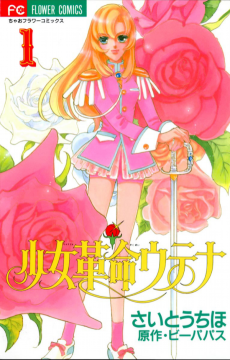 MANGA FantasyShoujo Kakumei Utena
MANGA FantasyShoujo Kakumei Utena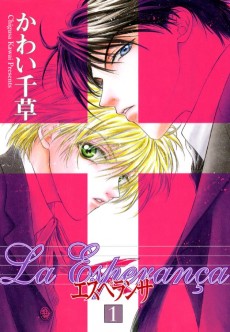 MANGA DramaLa Esperança
MANGA DramaLa Esperança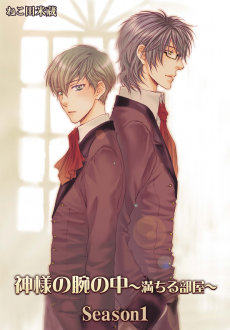 MANGA DramaMichiru Heya
MANGA DramaMichiru Heya MANGA DramaOrpheus no Mado
MANGA DramaOrpheus no Mado MANGA ActionBanana Fish
MANGA ActionBanana Fish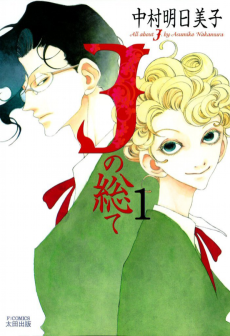 MANGA DramaJ no Subete
MANGA DramaJ no Subete
SCORE
- (3.8/5)
MORE INFO
Ended inJune 1, 1984
Favorited by 247 Users


